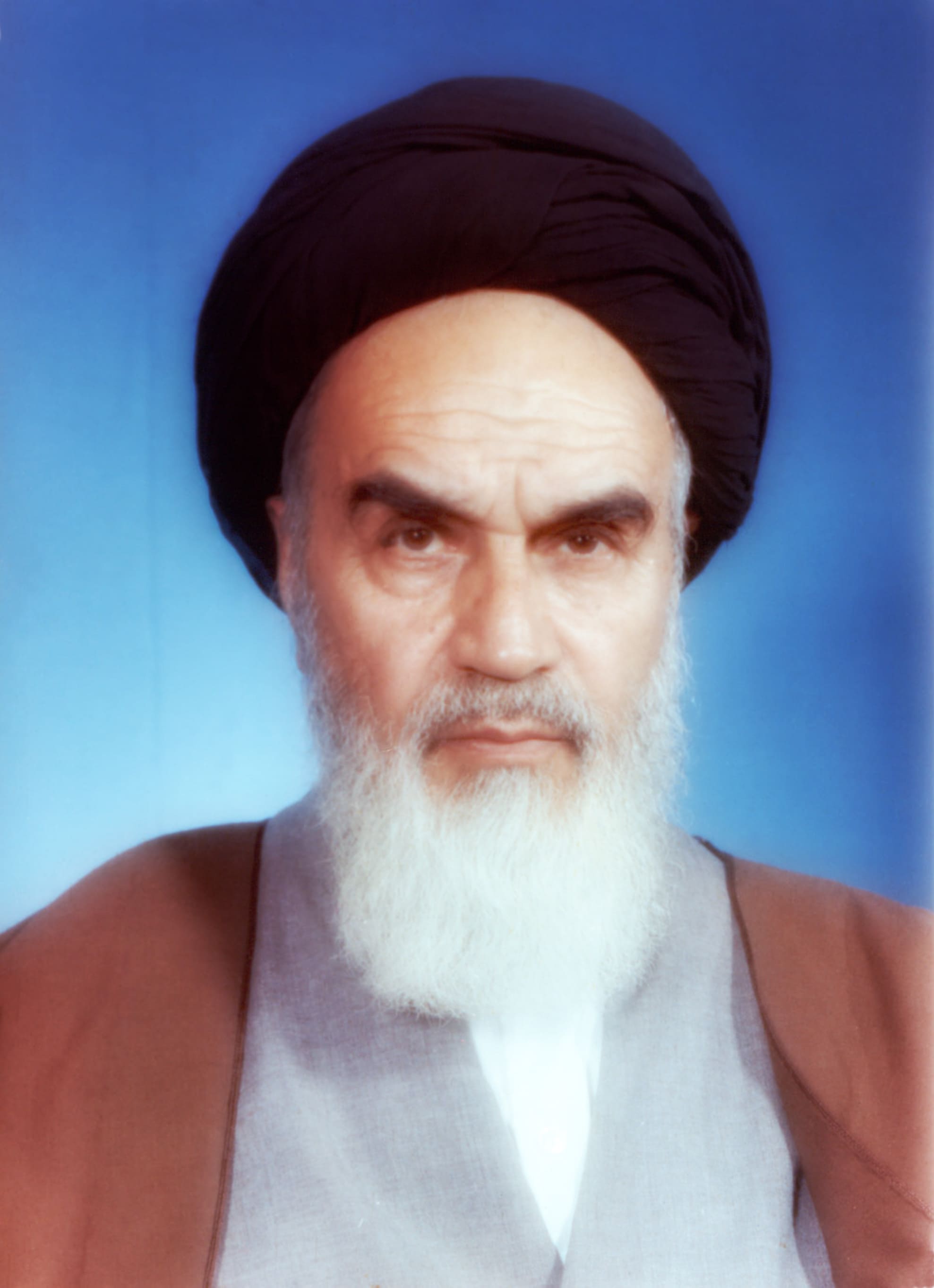Search Results - Khomeini, Ruhollah
Ruhollah Khomeini
 | spoken = Imam Khomeini
| religious = Ayatullah al-Uzma Ruhollah Khomeini
| posthumous =
| alternative =
|image=File:Emblem of Iran.svg
|image_size=100px
}}
| spoken = Imam Khomeini
| religious = Ayatullah al-Uzma Ruhollah Khomeini
| posthumous =
| alternative =
|image=File:Emblem of Iran.svg
|image_size=100px
}}Ruhollah Musavi Khomeini , |, }}}} (17 May 1900 or 24 September 19023 June 1989) was an Iranian Islamic revolutionary, politician and religious leader who served as the first Supreme Leader of Iran from 1979 until his death in 1989. He was the founder of the Islamic Republic of Iran and the main leader of the Iranian Revolution, which overthrew Mohammad Reza Pahlavi and ended the Iranian monarchy. Ideologically a Shia Islamist, Khomeini's religious and political ideas are known as Khomeinism.
Born in Khomeyn, in what is now Iran's Markazi province, his father was murdered in 1903 when Khomeini was just two years old. He began studying the Quran and Arabic from a young age and was assisted in his religious studies by his relatives, including his mother's cousin and older brother. Khomeini was a high ranking cleric in Twelver Shi'ism, an ''ayatollah'', a ''marja''' ("source of emulation"), a ''mujtahid'' or ''faqīh'' (an expert in ''sharia''), and author of more than 40 books. His opposition to the White Revolution resulted in his state-sponsored expulsion to Bursa in 1964. Nearly a year later, he moved to Najaf, where speeches he gave outlining his religiopolitical theory of Guardianship of the Jurist were compiled into ''Islamic Government''.
Khomeini was ''Time'' magazine's Man of the Year in 1979 for his international influence and has been described as the "virtual face of Shia Islam in Western popular culture", where he was known for his support of the hostage takers during the Iran hostage crisis, his fatwa calling for the murder of British Indian novelist Salman Rushdie, and for referring to the United States as the "Great Satan" and the Soviet Union as the "Lesser Satan". Following the revolution, Khomeini became the country's first supreme leader, a position created in the constitution of the Islamic Republic as the highest-ranking political and religious authority of the nation, which he held until his death. Most of his period in power was taken up by the Iran–Iraq War of 1980–1988. He was succeeded by Ali Khamenei on 4 June 1989.
The subject of a pervasive cult of personality, Khomeini is officially known as Imam Khomeini inside Iran and by his supporters internationally. His funeral was attended by up to 10 million people, or one sixth of Iran's population, the largest funeral at the time and one of the largest human gatherings in history. In Iran, his gold-domed tomb in Tehran's Behesht-e Zahrāʾ cemetery has become a shrine for his adherents, and he is legally considered "inviolable", with Iranians regularly punished for insulting him. His supporters view him as a champion of Islamic revival, anti-racism and anti-imperialism. Critics accuse him of human rights violations (including his ordering of attacks against demonstrators, and execution of thousands of political prisoners, war criminals and prisoners of the Iran–Iraq War), as well as for using child soldiers extensively during the Iran–Iraq War for human wave attacks—estimates are as high as 100,000 for the number of children killed. Provided by Wikipedia


